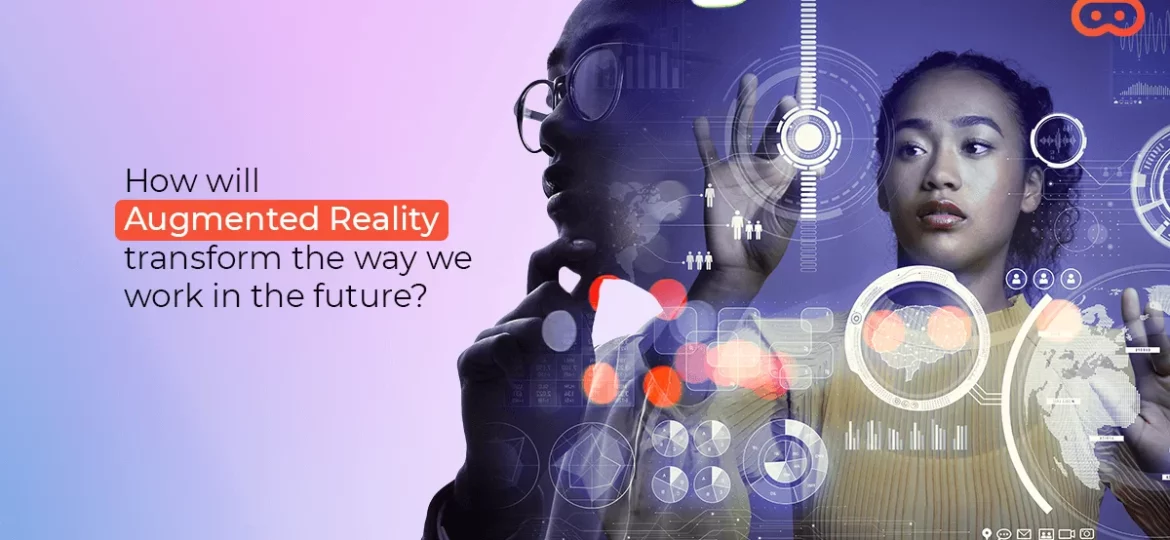
With smartphones increasingly becoming essential in the digital age, augmented reality (AR), as part of our daily life, is more than just a possibility – it could revolutionize the way we do business in the future. AR is projected to be one of the most influential technology trends for this decade. Interest in this technology is exploding as innovators explore the potential of AR in workforce advancement, customer experience, and customer interaction. The IDC survey shows that $18.8 billion was spent worldwide on AR and VR technology in 2020. The same study also reveals that the global VR/AR market will grow by 77% annually within 2023. This article will highlight how augmented reality can impact our traditional working structure and what to expect in the future.
It may seem like augmented reality is the future that’s coming perhaps a bit too soon, but the underlying technology is relatively straightforward and familiar. The AR platform you are using can receive, analyze, and send data using computer vision, mapping, localization, and depth tracking technology. Basically, by inserting virtual objects into the real-world environment, augmented reality enhances or expands real life. By 2024, the AR market is expected to reach $50 billion with the potential to impact every segment, from healthcare to retail. Below are some key sectors that have already started implementing AR technologies to transform the way of doing business.
Retail businesses
As consumers seek richer engagement points in their shopping experiences, retail businesses worldwide seek ways to remain competitive. AR can bridge the gap between digital and physical shopping experiences by offering a way for customers to try their products without the hassle of visiting the shop. Many reputed skincare and make-up brands are already leveraging this technology to enhance the consumer experience. Retailers can use any tablet or smartphone as an AR platform to create a shopping environment for consumers, be it in a traditional brick-and-mortar store or embedded into their e-commerce strategy. Allowing customers to try an item before buying it increases their satisfaction and reduces costly returns.
Industrial businesses
With AR in the field, engineers can enhance safety, reduce errors, and alleviate the pressure of having to be experts in every technology and infrastructure. Additionally, onsite technicians can receive real-time remote expert assistance, indicating markings, pointing out problems, superimposing models over items like vehicle engines, and more. Recently, Microsoft’s HoloLens was used by NASA in the construction of its new spacecraft, replacing manuals and complicated instructions with mixed reality applications.
Conceptual design and modeling
Augmented reality will likely have the most beneficial impact on the design and creative fields. During the design of items like homes and cars, 3D modeling is commonly used. Augmented reality is helpful for early-stage product design, giving designers an accurate sense of product form and function. An AR app company developed an end-to-end solution, allowing designers to visualize product design renderings at scale for a leading airline provider that manufactures inflight products. As an alternative to building expensive prototypes, they can provide clients with an AR experience that compares old and new products side by side, making it easier for them to understand the implications of such changes.
Learning and development
AR has accelerated learning and development by enabling organizations to train their employees from anywhere in the world. Using AR, operators gain experience on patients, machinery, and equipment in a completely risk-free environment. Research has also shown that AR increases retention rates over traditional methods by reducing the number of errors and enhancing employee security.
AR is highly effective because it is based on practical experience. Students gain a better grasp of procedures by simulating real situations. When students participate in a scenario, they learn more than just reading about them, watching videos, or listening to lectures.
Service and maintenance
Using Augmented Reality technology, ThyssenKrupp, one of the biggest names in the elevator manufacturing business, has reported a 75% reduction in overall service time. The AR application provides service technicians with all the maintenance/repair data relevant to a particular service case. First, the repair and maintenance AR app leverage image recognition to identify the problem and fetch relevant data about the specified issue or equipment. Additionally, the app incorporates image recognition algorithms that dynamically amplify live camera feeds and provide technicians with an exhaustive list of actions to guide them through the entire repairing process.#nbsp;
It is no secret that technology has consistently transformed the way we work and live; consider computers, smartphones, washing machines, etc. Technologies facilitate our daily lives, and augmented reality will be the next game-changer in that journey. According to a recent survey conducted by Threekit, 61% of consumers prefer retailers who offer augmented reality experiences. With more and more businesses realizing what the technology can bring to the table, it is not an exaggeration to say that AR is here to stay.

